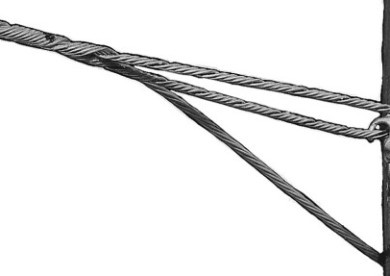
With the rise of renewable energy growth, Argentina’s power grid needs significant upgrades to support the energy needs and ease the transition to a more sustainable energy future. The power grid faces challenges related to infrastructure and investment, especially with the integration of renewable energy sources. Argentina’s power grid often struggles to transmit electricity from areas with high renewable energy potential like Patagonia and the northern regions. The lack of investment and maintenance results in an aging and strained electrical grid. This results in frequent power outages during periods of high demand. For instance, Buenos Aires experienced power outages in March 2025 that disrupted traffic signals and underscored the vulnerabilities in the electrical infrastructure. Expanding and modernizing the transmission infrastructure is essential for Argentina to achieve its renewable energy goals. High-quality false deadends is an essential component in modernizing and upgrading the power grid.
Power grid upgrades and a renewable energy transition could help Argentina reduce its reliance on fossil fuels and achieve a clean energy future. The use of a false dead end helps in ensuring safe, efficient, and flexible power transmission. False deadends allow temporary disconnections or reroutes during construction or maintenance. This reduces service disruptions and maintains grid stability during upgrades. The transmission system needs new routing paths and switch points to support new solar and wind farms. Using false deadends makes it easier to connect or disconnect segments of high-voltage lines. This eases the modular expansion of the network.
Upgrading and modernizing Argentina’s power grid using false deadends
Argentina’s power grid is undergoing upgrades to improve reliability, integrate renewable energy, and reduce outages. A false deadend is a structural clamp used in overhead power lines to anchor conductors, absorb mechanical tension, and allow for future grid expansions. The false end does not terminate the line but provides structural support like a dead end. The Rio Negro-Buenos Aires Transmission Line is an example of power grid upgrading using false dead deadends. False deadends strengthen mid-span supports without disrupting the operations. They can also support dynamic line rating sensors for real-time load monitoring. Here are the functions of a false deadend in upgrading Argentina’s power grid.

- Grid expansion—Argentina is adding new transmission lines to support the Vaca Muerta gas and Patagonia wind power. False dead deadends allow engineers to reinforce existing powers without replacing the entire sections.
- Improving resilience—the nation faces high winds, storms, and temperature swings, which strain power lines. False dead deadends redistribute mechanical stress to reduce the risk of line breaks and blackouts.
- Renewable energy integration—new solar and wind farms need grid reinforcements to handle variable power flows. The false dead deadends help upgrade lines to higher capacities.
- Reducing power outages—false deadends can be installed live-line, which reduces downtime. Traditional deadends need full line disconnection for installation.
Grid modernization and infrastructure projects in Argentina
Grid modernization and energy infrastructure upgrades are crucial in the clean energy transition. Argentina is investing heavily in strengthening its power transmission and distribution networks. This is crucial with the rising demands from urban centers, increasing renewable energy capacity, and the need for regional integration. Grid modernization is crucial in Argentina due to challenges such as frequent outages, limited connectivity, high transmission losses, and underinvestment in smart grid technologies. Discussed below are the key infrastructure projects and upgrades in Argentina.

- 500 MW battery energy storage initiative—this project launched in 2024, which aims to install 500 MW of battery storage capacity in Buenos Aires. This will improve grid stability, manage peak demand, and support renewable energy integration. It has enhanced energy reliability in Argentina’s most densely populated regions.
- High-voltage transmission lines from Patagonia—Patagonia’s wind resources need long-distance transmission to reach consumption centers. The projects include 500 kV lines connecting wind farms to the national grid. It enables Argentina to capitalize on low-cost wind energy exports in the long term.
- Solar integration projects—solar mega-parks in Jujuy and Salta—drive energy generation in Argentina. This needs upgrades to substations and distribution networks to bring clean energy into the grid faster.
- Cross-border interconnections—Argentina is enhancing energy collaboration with Brazil, Chile, and Bolivia. Such projects strengthen regional energy security and open doors for clean energy exports.
- Smart grid pilots & digitalization—the use of digital control centers and smart metering initiatives could help in outage detection. These projects are being tested in Buenos Aires and Córdoba. They aim to improve real-time monitoring and better demand management.
